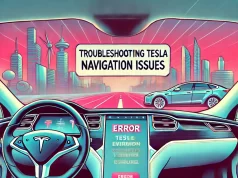Tesla owners may face some challenges when trying to charge their vehicles in cold weather.
This is because the lithium-ion battery pack that powers the electric car is sensitive to extreme temperatures and needs to be warmed up before accepting a charge.
If the battery is too cold, the onboard computer may prevent charging to avoid damaging the cells.
This can be frustrating for drivers who need to recharge their cars in winter or in regions with low temperatures.
How To Fix Tesla Not Charging in the Cold?
Fortunately, there are some ways to overcome this issue and ensure that your Tesla can charge in the cold. Here are seven tips to help you out:
1. Use Scheduled Departure and Climate Defrost
One of the easiest ways to prepare your Tesla for charging in the cold is to use the Scheduled Departure and Climate Defrost features.
These features allow you to set a time when you want your car to be ready to drive and automatically warm up the battery and the cabin.
You can also activate the defrost mode to melt any ice or snow on the charge port and the windows. To use these features, you need to plug in your car and follow these steps:
1. Open the Tesla app on your smartphone and select Climate.
2. Tap on the Scheduled Departure icon and set the time when you want to leave.
3. Tap on the Defrost icon to turn on the Defrost mode.
4. The car will start to heat up the battery and the interior about an hour before your departure time and will be ready to charge and drive.
2. Use Superchargers or AC Chargers
Another way to charge your Tesla in the cold is to use Superchargers or AC chargers instead of DC chargers. Superchargers are Tesla’s own network of fast-charging stations that can deliver up to 250 kW of power to your car.
AC chargers are the standard wall outlets that can provide up to 11 kW of power to your car.
Both of these types of chargers can help warm up the battery faster than DC chargers, which are slower and less efficient.
To find the nearest Supercharger or AC charger, you can use the navigation system on your car’s touchscreen or the Tesla app on your phone.
3. Drive Your Car Before Charging
Driving your car before charging can also help warm up the battery and improve the charging speed.
This is because the battery generates heat when it is in use and can reach the optimal temperature for charging.
However, you should avoid driving too fast or too aggressively, as this can drain the battery faster than it can warm up.
A moderate and steady speed of about 50 mph is recommended for optimal battery heating.
4. Keep Your Car Plugged In When Not in Use
Keeping your car plugged in when not in use can also prevent the battery from getting too cold and losing charge. This is especially important if you park your car outdoors or in an unheated garage.
By plugging in your car, you can maintain the battery’s state of charge and allow it to warm up when needed.
You can also set the charge limit to between 20% and 80% to avoid overcharging or undercharging the battery.
5. Use a Battery Heater or Blanket
If you don’t have access to a plug or a charger, you can use a battery heater or a blanket to keep the battery warm. A battery heater is a device that can be attached to the battery pack and provide heat through electrical resistance.
A battery blanket is a cover that can be wrapped around the battery pack and provide insulation. Both of these options can help prevent the battery from freezing and losing charge.
However, you should be careful not to overheat the battery or damage the components.
6. Use a Portable Generator or Power Bank
If you are in an emergency situation and need to charge your Tesla in the cold, you can use a portable generator or a power bank to provide some power to your car.
A portable generator is a device that can produce electricity from gasoline or diesel. A power bank is a device that can store electricity from a wall outlet or a solar panel.
Both of these options can be connected to your car’s charge port and provide some juice to your battery. However, you should be aware that these options are not very efficient or reliable and may not be able to charge your car fully.
7. Contact Tesla Service or Roadside Assistance
If none of the above tips work and your Tesla still won’t charge in the cold, you may need to contact Tesla service or roadside assistance for help.
Tesla service is the official network of Tesla technicians and service centers that can diagnose and repair your car.
Roadside assistance is the 24/7 support service that can provide you with towing, battery jump, tire change, lockout, or other assistance.
You can contact Tesla service or roadside assistance by using the Tesla app on your phone or by calling the toll-free number on your car’s touchscreen.
Conclusion
Tesla not charging in cold is a common problem that can be solved by following some simple tips.
By using the Scheduled Departure and Climate Defrost features, using Superchargers or AC chargers, driving your car before charging, keeping your car plugged in when not in use, using a battery heater or blanket, using a portable generator or power bank, or contacting Tesla service or roadside assistance, you can ensure that your Tesla can charge in the cold and avoid any damage to the battery.




